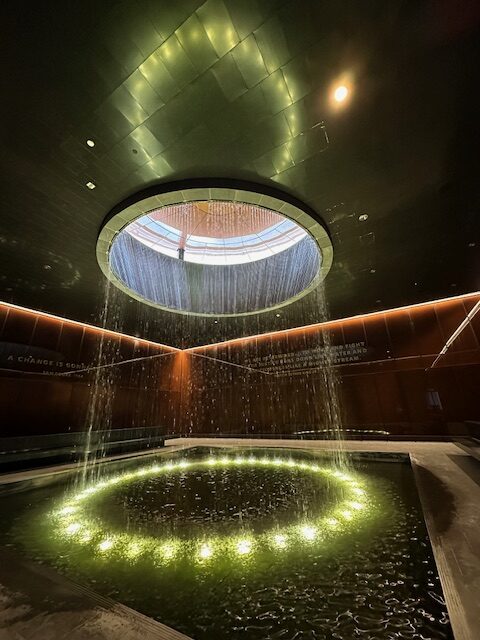By: Anne Melton, Consultant
Have you ever received a piece of mail where your name has been misspelled, your salutation incorrect, or it includes typos resulting from a careless mail merge? My reactions to such communications range from laughter to annoyance to downright displeasure. Being called Mrs. makes me cringe, or worse for me – because my spouse and I have different surnames – being called Mrs. Spouse Last Name. I also find it irritating when our household is referred to as the Spouse Last Name Family [insert eye roll here]. My frustration stems from the assumptions that are made about who our family is, and those assumptions typically default to old conventions that are woefully out of date (and sometimes downright offensive and sexist). You can probably guess that I toss those mailings straight into the recycle bin without a second thought.
These same outdated and potentially harmful practices are everywhere, not only in mass mailings. (Think of how commonly “hey guys!” is said to an audience that doesn’t just include men.) As prospect researchers, one way we can work to be more equitable and confront intrinsic biases is when writing profiles. Enter inclusive language…
What makes language inclusive?
Inclusive language is “language that acknowledges diversity, conveys respect to all people, is sensitive to differences, and promotes equal opportunities…[these guidelines] avoid pitfalls or habits that may unintentionally lead to marginalization, offense, misrepresentation, or the perpetuation of stereotypes.”1 Inclusive language means that we recognize our words have power, and that we must take care in using those words by trying our best to ensure no one is hurt, excluded, or misrepresented in the ways we share information. Doing so helps us communicate more clearly and accurately and promotes a culture of belonging and respect.
How researchers can promote inclusive language
As researchers, we are constantly conveying information about funders, donors, and constituents, and we can advocate for inclusivity through our usual channels like profiles, event briefings, memos, and even emails and conversations. Language that is not inclusive can fall into the categories of racist, sexist, gendered, coded, ageist, ableist, homophobic, and violent. It behooves us to be aware of and avoid using these types of harmful language. Here are just a few examples on how to reframe how we convey information in a profile:
Instead of:
Mr. and Mrs. Donor gave $100 million to build a new athletics center. Mrs. Donor is a former Olympic athlete.
Use:
Jamie Donor and Taylor Donor gave $100 million to build a new athletics center. Jamie is a former Olympic athlete.
Instead of:
The couple have two sons, Robin and Lee. The boys attend Birchwood Academy.
Use:
The couple have two children, Robin and Lee. They are students at Birchwood Academy.
Instead of:
Sandy is chairman of the board of a nonprofit that provides job training to ex-prisoners.
Use:
Sandy is chair of the board of a nonprofit that provides job training to individuals who have been impacted by the justice system.
Beyond the profile
Inclusive language can also mean doing away with phrases or words that are unclear or don’t accurately represent what we are trying to say. Often those phrases and words have roots in the non-inclusive language categories named above. A few that come to mind are:
Instead of:
Let’s pull the trigger on deciding which vendor to use.
Use:
Let’s decide by the end of the day which vendor to use.
Instead of:
This week, we are welcoming freshmen students to campus.
Try:
This week, we are welcoming first-year students to campus.
Instead of:
We are applying for a grant to build housing for the homeless.
Use:
We are applying for a grant to build housing for people experiencing homelessness.
Instead of:
Isn’t it crazy that we exceeded our fundraising goal at the gala?
Use:
Isn’t it wonderful/amazing/wild that we exceeded our fundraising goal at the gala?
Beyond our written and spoken communications, there are other steps we can all take to foster a culture of inclusiveness and belonging in our workplaces, and with our clients and donors:
- Create an inclusive language style guide. Just as your organization might have a style guide or in-house writing conventions, consider creating an inclusive language guide that streamlines your writing organization-wide for you and your colleagues. Make a point to keep it a living document and review and vet it regularly.
- Educate yourself. Once you start to notice how ingrained non-inclusive language is in our society, it may surprise you at how prevalent it is. Learn about other examples and work to exclude those words, phrases, and colloquialisms from your vernacular in other aspects of your life. See the resources below as a few starting points, but there are many more out there!
Mistakes and missteps happen, and that’s okay. Make amends, correct, and move on. Just as our profession and our skills sets are always evolving, so too is language and our profession’s best practices.
Sources, references, and further reading:
[1] Linguistic Society of America. (n.d). Guidelines for Inclusive Language. https://www.lsadc.org/resources_list.asp?c=10&i=22
Olsen, Erin. (2025, May 1-3). Inclusive and Equitable Language in Prospect Research [Conference presentation]. NEDRA 2025, Portland, ME, United States.
https://www.apa.org/ed/precollege/psn/2022/09/inclusive-language
https://www.apa.org/about/apa/equity-diversity-inclusion/language-guidelines
https://counseling.northwestern.edu/blog/inclusive-language-guide/
https://www.csueastbay.edu/universitycommunications/inclusive-language-guide.html
https://www.culturemonkey.io/employee-engagement/language-inclusive/
https://devar.ucdavis.edu/using-inclusive-language
https://www2.gov.bc.ca/assets/gov/careers/all-employees/working-with-others/words-matter.pdf
https://www.washington.edu/brand/guides/equitable-language-guide/#explore-the-guide-2










